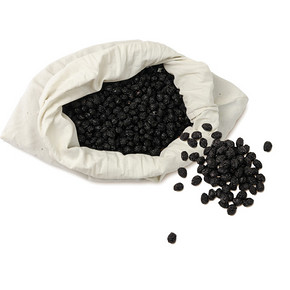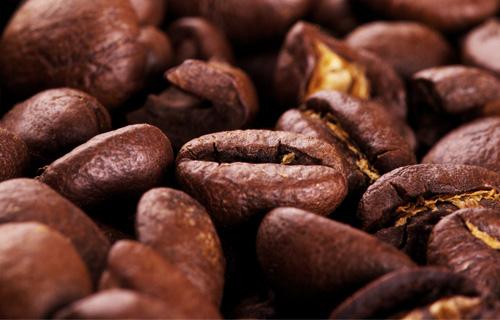What's so good about Arabica coffee?
Follow the caf é (Wechat official account vdailycom) and found that Beautiful Cafe opened a small shop of its own.
Coffee belongs to Rubiaceae. So far, it has been found that there are 103 varieties of coffee, but it has commercial value. Only three categories are widely cultivated, namely, Alabica, Rubosita variety of Canephora and Libelica. Today, let's not introduce the other two kinds of coffee, let's take a look at what Arabica is.
When it comes to Arabica, it begins with the origin of coffee in Ethiopia, and then begins to transplant to places around the world that are suitable for coffee growth. Up to now, the main members of Arabica variety family are: Typica, Bourbon, Kaddura, Catura, Pacas, Villa Sarchi, Maragogype, Pacamara, Mundo Novo, Catuai, Geisha, Timor, Catimor.

1. Iron pickup (Typica)
It is one of the oldest native varieties in Ethiopia. It is also called Red Top Coffee because its top leaves are red and copper. Although the quality is excellent and the flavor is fascinating, it has poor disease resistance, easy to infect leaf rust, poor light tolerance and low yield. At present, the beans from several major producing areas, such as Ethiopia Yegasuefei, Sidamo, Lim and Harald, which can be seen on the market, are almost all native iron pickups. Later, after transplantation, the shape of beans began to change due to changes in the growth environment. The most classic blue mountains of Jamaica and Kona of Hawaii are all varieties of iron cards, and they are also grown in coffee-growing areas such as Pu'er, Dehong and Nujiangba in Yunnan Province of China.
2. Bourbon (Bourbon)
It comes from an iron pickup. It was expanded in 1708 by the French on the West African island of St. Helena, also known as Bourbon, and is said to be famous for Napoleon's love of the smell. The yield and growth ability are higher than the iron pickup, but it is weak in resistance to diseases and insect pests, sensitive to strong wind and strong precipitation, and needs the protection of shade trees. It is a variety of small grain coffee second only to the iron pickup, suitable for growing at an altitude of 1200-2000 meters. Because the terminal bud is green, it is called green top coffee. According to the different color of its fruit, it is divided into red bourbon and yellow bourbon.
Bourbon has the same flavor as tin card, low acidity and lubricated taste. In addition to bourbon produced on the island of Bourbon, Brazil and El Salvador are also very famous. The disadvantage is that the result can only be reproduced every other year.
3. Kaddura (Catura)
A natural variety of Arabica variety Bourbon, it was discovered in Brazil in 1937. Its tree is not as tall and shorter as bourbon. Due to inheriting the blood of bourbon, so the disease resistance is relatively weak, but the yield is higher than bourbon, can be high-density planting, do not need shade trees, direct exposure in the sun can also be full of vitality, so he also has a name-"exposed coffee" (Sun Coffee). Although found in Brazil, Kaddura is not suitable for growing in Brazil, so it is not planted on a large scale in Brazil, but is popular in Central and South America, such as Colombia, Costa Rica and Nicaragua. Kaddura is planted on a large scale. The flavor is slightly inferior to bourbon.
4. Pacas (Pacas)
"Pacas" in 1935, El Salvador coffee farmer "Don Alberto Pacas" selected high-production San Ramon bourbon varieties and moved them to the farm for planting. In 1956, his coffee tree produced more fruit than the same kind of coffee trees. University of Florida professor "Dr. William Cogwill" identified this as a genetic mutation in bourbon and named it "Pacas". Pacas, with its high output and good quality, is popular in Central America. Currently, 68% of El Salvador is bourbon, while Pacas has 29%. Due to the absence of diplomatic relations between El Salvador and Chinese mainland, this variety of coffee beans is relatively rare in China.
5. Vera Saqi (Villa Sarchi)
The bourbon variety, which was first found in Costa Rica in the 1960s, has often appeared on the list of winners in recent years, which can be described as a promising dark horse. The fruit acid is lively and energetic, the caramel taste is obvious, and the yield is less. At present, there are also a small number of introduction in Yunnan. But there are few varieties on the market.
6. Maragogype
"Maragogype" was discovered in 1870 in the "Maragogype" producing area of "Bahia" in northeastern Brazil. Because the bean is at least three times larger than the average Arabica, it is the largest in the world, so it is commonly known as elephant bean. It is the most well-known variety of iron pickup beans, very suitable for 700-800 meters of low altitude area, but often light aroma, short aftertaste, no characteristics, some will also produce a fishy smell. If you choose the area above 1000 meters above sea level, it will show a more sucrose, cream chocolate flavor, mild sour taste, sweet and pleasant. Guatemala, Nicaragua, Cuba, Indonesia and so on have been planted.
7. Papamara (Pacamara)
Although there is not enough conclusive evidence to show that Pacamara is the grafting product of Pacas and Maragogype, because of its large bean shape and its earliest production in El Salvador, this bean is no stranger to friends in the coffee industry. Pacamara, a moderately baked high-altitude growing area, usually performs well in cup tests, with excellent balance, moderate sweet and sour, and sometimes strong floral aromas. At the 2014 Harbin International Coffee Championship, contestants from El Salvador used this bean to participate in the competition and won the second place.
8. New World (Mundo Novo)
"Mundo novo" is said to be the product of an affair between bourbon and tin pickup, with high yield and strong disease resistance. the only drawback is that it can be more than 3 meters high and is not easy to harvest. It was first found in Brazil that it was named New World because of its good cup test quality and was praised as the new hope of Brazilian coffee industry.
9. Catuai
"Catuai" Kaduai is a hybrid of New World and Kaddura, worthy of the name. It inherits the advantage of Kaddura's low stature and makes up for the weakness of Arabica fruit. The result is solid, and it is not easy to fall when the strong wind blows. Unfortunately, the bean shape is slightly smaller, and the overall flavor is slightly monotonous and more sour than Kadura. The most famous single variety of beans, Costa Rica Tarazhu, and some producing areas of Central and South America such as Panama. Kaduai also has the difference between red fruit and yellow fruit, and red fruit wins more often than yellow fruit. Kaduai, Kaddura, New World and bourbon are the four main varieties of coffee in Brazil.
10. Rose Summer (Geisha)
The species of Geisha was discovered in the rose forests of Ethiopia in 1931 and sent to the Coffee Institute in Kenya. It was introduced to Uganda and Tanzania in 1936 and Costa Rica in 1953. Panama was founded in the 1970 s by Francesca of the seven estates of Dongba. Mr. Serraxin got the seeds from CATIE in Costa Rica and started growing Rosa Coffee, which is hard to come by because of its low production and bidding. Rose coffee raw beans have a very beautiful turquoise, jade-like warm texture, smell of fresh grass, peach, berry and oolong tea that most coffee beans do not have. The most famous rosy summer is the Rose Summer of the Panamanian Emerald Manor. Since winning consecutive awards, coupled with the hype and popularity of domestic coffee people in recent years, prices have gone up. But the flavor is amazing. In fact, since becoming famous, the rosy summers of other estates in Panama, Costa Rica, Colombia, and even native species such as Ethiopia and Malawi have begun to compete in the market.
11. Timor
"Timor" discovered Tim, the crystallization of Arabica and Roberta, in East Timor, an island country at the eastern end of the Nusa Tenggara Islands. Although these are two completely different gene sequences, it is not known how they were finally recombined into it. Perhaps you should sigh more about the magic of creation. Tim beans have low sour taste, plain flavor, lack of characteristics, and often appear the unhappy tail rhyme of Robusta gene, so the industry uses it as Italian coffee to mix beans to reduce the cost of raw materials. However, readers can be assured that Shixia boutique coffee will never do anything that harms the delicacy.
12. Katim (Catimor)
"Catimor" in 1959, the Portuguese moved the bourbon variety Kaddura to East Timor and mixed with Tim, who was of Robosta ancestry, to produce a mixed second generation, Katim, whose disease resistance and yield had greatly increased. Although Katim inherits the strong advantages of Robusta beans, he also inherits genes with poor flavor. This is also a heart disease of many soybean farmers in Yunnan, China. Under the convenience of planting, it will naturally lose its flavor. The excellent flavor of coffee comes from the growing environment such as high-quality and fertile soil, scientific and rigorous treatment of raw beans, and it is basically its high-quality variety, that is, pedigree. Here, I suggest that farmers and industry researchers in Yunnan should spend less energy on promoting competitions for quick success and instant benefits, and more on solid quality improvement, so that people who like coffee can drink more Chinese coffee with excellent flavor.
Important Notice :
前街咖啡 FrontStreet Coffee has moved to new addredd:
FrontStreet Coffee Address: 315,Donghua East Road,GuangZhou
Tel:020 38364473
- Prev

Starbucks Arabica Coffee
Following caf é (Wechat official account vdailycom) found that Arabica Coffee, a coffee plant native to Yemen and Ethiopia, opened its own shop at the Beautiful Cafe. The coffee beans produced by this plant are one of the best varieties in the world. Compared with coffee beans from South American countries, many people prefer the aroma and taste of the coffee beans. In addition
- Next

Introduction to Arabica Fine Coffee
Following Cafe Review (Wechat official account vdailycom) found that fine coffee opened a small shop of its own. Boutique coffee is a unique flavor of coffee beans cultivated under special climate and geographical conditions. It is quite simple and lively. The advantage of boutique coffee beans is that, first of all, there are almost no defective beans, the beans are thick and well-balanced, and the taste is sour, sweet, mellow, uncharred and bitter.
Related
- Detailed explanation of Jadeite planting Land in Panamanian Jadeite Manor introduction to the grading system of Jadeite competitive bidding, Red bid, Green bid and Rose Summer
- Story of Coffee planting in Brenka region of Costa Rica Stonehenge Manor anaerobic heavy honey treatment of flavor mouth
- What's on the barrel of Blue Mountain Coffee beans?
- Can American coffee also pull flowers? How to use hot American style to pull out a good-looking pattern?
- Can you make a cold extract with coffee beans? What is the right proportion for cold-extracted coffee formula?
- Indonesian PWN Gold Mandrine Coffee Origin Features Flavor How to Chong? Mandolin coffee is American.
- A brief introduction to the flavor characteristics of Brazilian yellow bourbon coffee beans
- What is the effect of different water quality on the flavor of cold-extracted coffee? What kind of water is best for brewing coffee?
- Why do you think of Rose Summer whenever you mention Panamanian coffee?
- Introduction to the characteristics of authentic blue mountain coffee bean producing areas? What is the CIB Coffee Authority in Jamaica?

